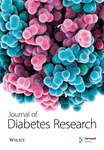Molecular and Cellular Effects of C-peptide—New Perspectives on an Old Peptide
Abstract
New results present C-peptide as a biologically active peptide hormone in its own right. Although C-peptide is formed from proinsulin and cosecreted with insulin, it is a separate entity with biochemical and physiological characteristics that differ from those of insulin. There is direct evidence of stereospecific binding of C-peptide to a cell surface receptor, which is different from those for insulin and other related hormones. The C-peptide binding site is most likely a G–protein–coupled receptor. The association constant for C-peptide binding is approximately 3 × 109M-1. Saturation of the binding occurs already at a concentration of about 1 nM, which explains why C-peptide effects are not observed in healthy subjects. Binding of C-peptide results in activation of Ca2+ and MAPK-dependent pathways and stimulation of Na+,K+-ATPase and eNOS activities. The latter 2 enzymes are both deficient in several tissues in type 1 diabetes. There is some evidence that C-peptide, and insulin may interact synergistically on the insulin signaling pathway. Clinical evidence suggests that replacement of C-peptide, together with regular insulin therapy, may be beneficial in patients with type 1 diabetes and serve to retard or prevent the development of long-term complications.




